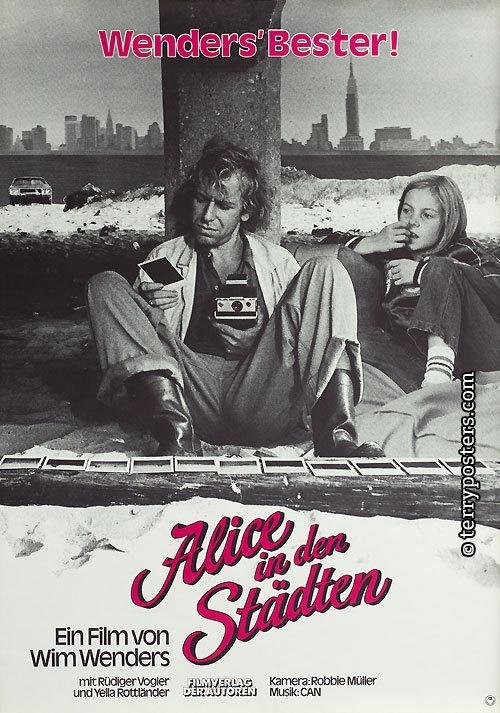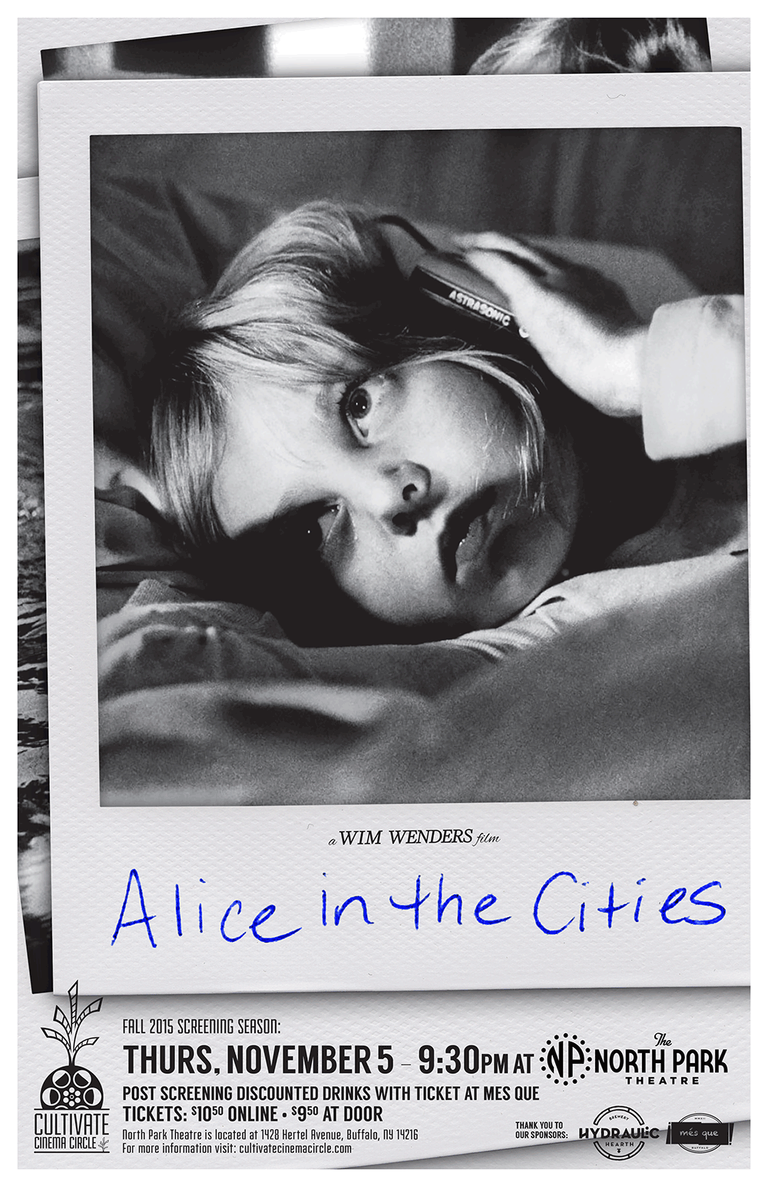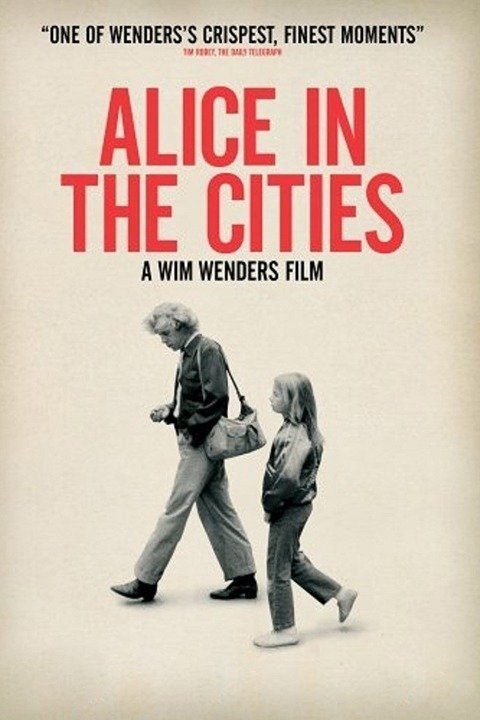Alice in the Cities (1974): a beautiful cult road movie | una hermosa road movie de culto

By now everyone must have seen Perfect Days, the beautiful film that represented Japan at the last edition of the Academy Awards, and if there is anyone who has not seen it yet, go see it immediately. One of the things that surprised the audience was that such a serene, poetic and Japanese film was directed by a German Director. But those who were surprised did so because they were unaware of one of the great names of European cinema and a worshipper of Japanese culture: Wim Wenders.
A estas alturas ya todos deben haber visto Perfect Days, la hermosa película que representó a Japón en la última edición de los premios de la Academia y si hay alguno que aún no la haya visto, vaya inmediatamente a verla. Una de las cosas que sorprendió a los espectadores fue que una película tan serena, tan poética y tan japonesa estuviera dirigida por un alemán. Pero quienes se sorprendieron lo hicieron desde el desconocimiento de uno de los grandes nombres del cine europeo y un adorador de la cultura nipona: Wim Wenders.
Despite the German director's long career, I had only seen his legendary Paris, Texas and after having loved that film - and having loved Perfect Days even more - I felt indebted to Winders. For that reason I wanted to revisit one of the most memorable works of his filmography, Alice in den Städten (Alice in the Cities). It tells the story of Philip Winter, a German citizen who travels around the USA for several weeks with his Polaroid camera in hand taking photographs of different corners of the country. A few minutes later we learn that Philip is on a work trip in which he must write a report that he hasn't even started because he doesn't feel the country. He doesn't know what to write because he hasn't seen anything that moves him to do so. The entire first part is very visual and the director plays with the idea of photographs as a limited and often false representation of reality. That inability of the lens to capture what the eye sees firsthand is one of the oldest struggles of any photographer. Faced with the refusal to postpone the deadline for his article, Philip resigns and sells his car to buy a ticket back to Germany, but when he arrives at the airport he finds that there's a strike that has suspended flights to his country for an uncertain period. As he weighs his options, Philip makes contact with a woman who is in the same situation. The woman has a nine-year-old daughter. The girl is called Alice. The Alice of the film's title.
A pesar de la larga trayectoria del director alemán, yo sólo había visto su mítica Paris, Texas y después de haber amado esa película - y haber amado aún más Perfect Days - me sentí en deuda con Winders. Por esa razón quise revisar una de las obras más recordadas de su filmografía, Alice in den Städten (Alice in the Cities). En ella se cuenta la historia de Philip Winter, un ciudadano alemán que durante varias semanas recorre los EEUU con su cámara Polaroid en la mano tomando fotografías de diferentes rincones del país. A los pocos minutos nos enteramos de que Philip se encuentra en un viaje de trabajo en el cual debe escribir un reportaje que ni siquiera ha empezado porque no siente el país. No sabe qué escribir porque no ha visto algo que lo mueva a hacerlo. Toda esa primera parte es muy visual y el director juega con la idea de las fotografías como representación limitada y muchas veces falsa de la realidad. Esa imposibilidad del lente de captar lo que la vista observa en carne propia es una de las luchas más antiguas de cualquier fotógrafo. Ante la negativa de un nuevo aplazamiento en la fecha de entrega de su artículo, Philip renuncia y vende su auto para comprar un boleto de vuelta a Alemania, pero cuando llega al aeropuerto se entera de que hay una huelga que ha suspendido los vuelos hacia su país por un período incierto. Mientras evalúa sus opciones, Philip establece contacto con una mujer que se encuentra en su misma situación. La mujer tiene una hija de nueve años. La niña se llama Alice. La Alice del título de la película.
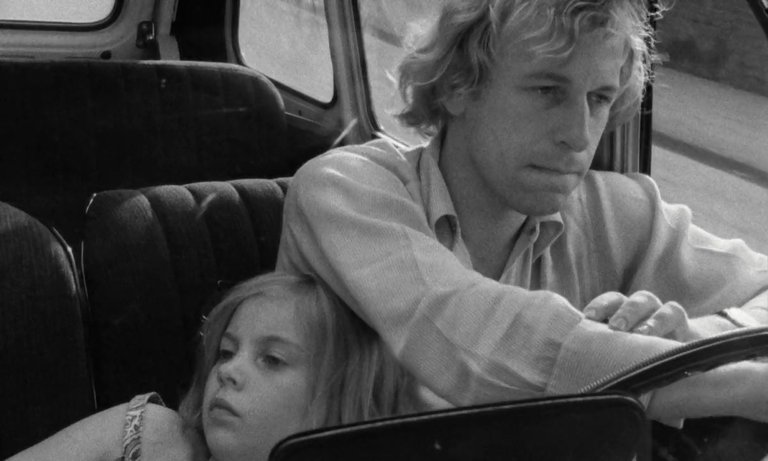
The woman is desperate to leave the US and buys a ticket to Amsterdam for the following evening and convinces Philip to board the same flight and share a room that night with her and her daughter. There, the woman tells him about the situation she is in and why she prefers to be accompanied that night. Partly out of solidarity and partly because he has nothing better to do, Philip decides to stay with the woman and her daughter without suspecting the adventure he was embarking on.
La mujer está desesperada por abandonar los EEUU y compra un boleto para Amsterdam para la tarde del día siguiente y convence a Philip de que se embarque en el mismo vuelo y comparta habitación esa noche con ella y con su hija. Allí, la mujer le cuenta la situación en la que se encuentra y el por qué prefiere estar acompañada esa noche. Un poco por solidaridad y un poco por no tener nada mejor que hacer, Philip decide quedarse con la mujer y con su hija sin sospechar la aventura en la que se estaba embarcando.
Because the next day, the woman leaves the hotel early, leaving him a note with instructions on where and when she will meet her daughter. But that note is followed by another with very different instructions and Philip finds himself caught in a complex, delicate and at the same time somewhat comical situation: the woman has left her daughter in his care and asks him to take her to Amsterdam with him, where she will join them later. Maybe it's because those were different times or because it was a different society, or simply because it's a work of fiction, but what mother would be capable of leaving her nine-year-old daughter in the care of a compatriot whom she had only met the night before? Well, Alice's mother. It's for this reason that the girl travels with Philip to the capital of the Netherlands, and then to another city, and the hours and days go by waiting for the mother to return, but it's this journey, this continuous movement, the beginning of the central story of the film, which is nothing more than the father-son friendship that arises between the two - even though it's sometimes very difficult to understand each other - and this living adventure, this trip with some purpose and some kind of charm that Philip did not find in the new world. Like the mythical Paris, Texas, Alice in the cities is a search, a road movie of self-discovery filmed, in this case, in beautiful black and white photography and in locations in a country that no longer exists as such: West Germany.
Porque al día siguiente, la mujer sale temprano del hotel dejándole una nota con indicaciones sobre dónde y cuándo se reunirá con su hija. Pero a esa nota sigue otra con indicaciones muy diferentes y Philip se encuentra atrapado en una situación compleja, delicada y a la vez algo cómica: la mujer le ha dejado su hija a cargo y le pide que la lleve hasta Amsterdam con él, en dónde ella se les unirá posteriormente. Quizás se deba a que eran otros tiempos o a que era una sociedad distinta, o simplemente a que se trata de una obra de ficción, pero ¿qué madre sería capaz de dejar a su hija de nueve años al cuidado de un compatriota al que apenas conoció la noche anterior? pues, la madre de Alice. Es por esa razón que la niña viaja con Philip hasta la capital de los países bajos, y luego a otra ciudad, y se van pasando las horas y los días a la espera del retorno de la madre, pero es ese viaje, ese movimiento continuo, el inicio de la historia central de la película que no es más que la relación de amistad paterno/filial que surge entre los dos - aunque a veces sea muy complicado entenderse - y esa aventura viva, ese viaje con algún propósito y algún tipo de encanto que Philip no consiguió en el nuevo mundo. Al igual que la mítica Paris, Texas, Alice in the cities es una búsqueda, una road movie de auto descubrimiento filmada, en este caso, en una hermosa fotografía en blanco y negro y en locaciones de un país que hoy ya no existe como tal: Alemania Occidental.
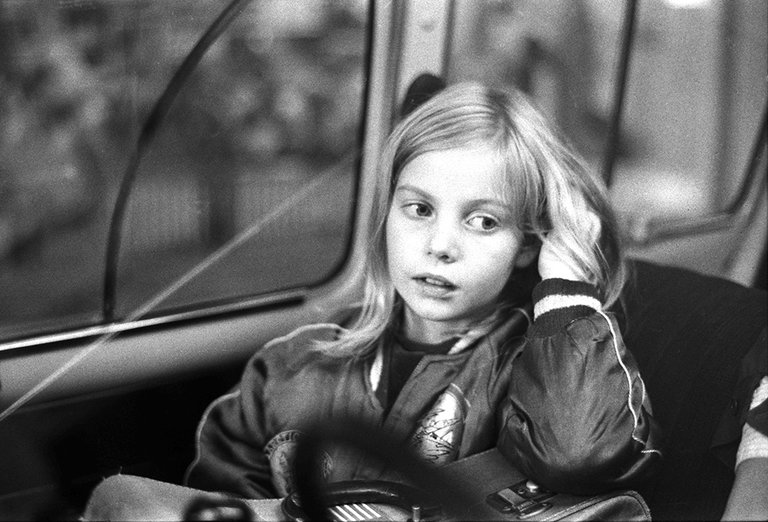
The dynamic between Philip and Alice is one of courtesy at first, then some complicity, friction and conflict when their time together is indefinitely extended, and finally friendship and understanding. Although the girl's questions and requests sometimes drive Philip to despair, he ends up taking a liking to her, perhaps not as his own daughter, but perhaps as a niece who has been unexpectedly left in his care.
La dinámica entre Philip y Alice es de cortesía al inicio, algo de complicidad luego, roces y conflictos cuando su tiempo juntos se alarga indefinidamente y finalmente de amistad y entendimiento. Si bien las preguntas y peticiones de la niña a veces desesperan a Philip, éste acaba tomándole cariño, tal vez no como a una hija propia, pero sí tal vez como a una sobrina que han dejado a su cargo de manera inesperada.
In such a situation, it's inevitable to ask oneself: what would I have done in Philip's place? In today's world, perhaps the most sensible thing would have been to take the girl to the authorities and have them, the police, reunite the mother and daughter, but what consequences could that have for the mother? Wouldn't that be harming rather than helping? Of course, nowadays it's much easier to find someone thanks to the Internet, social networks, government databases, etc., but in 1974, when you could only call by phone, send telegrams and trust in the memory of a nine-year-old girl, perhaps it would not have been so easy to find the woman. But it's just as well, because the adventure of the two travellers leaves some very beautiful scenes such as the one in which Philip and Alice enter a booth that takes instant photos and we see the different expressions on both their faces, or the moment when, finally appreciating each other's company, they realise that they had both forgotten the objective of their entire pilgrimage. Set against the backdrop of a country divided by an infamous wall and the emptiness of a society in decline, exquisite photographic sequences, one journey after another, one city after another, and a charming protagonist, Alice in the Cities is an interesting and different alternative to most of the stories currently found on streaming platforms. Have any of you seen this film? What other one do you recommend from the director? I'll read you in the comments.
Ante tal situación es inevitable preguntarse ¿qué hubiera hecho yo en el lugar de Philip? En tiempos actuales quizás lo más sensato habría sido llevar a la niña con las autoridades y que ellos, la policía, se encargasen de reunir a madre e hija, pero ¿qué consecuencias podría traer eso para la madre? ¿no sería eso perjudicar en lugar de ayudar? Claro que hoy día es mucho más fácil dar con alguien gracias al internet, las redes sociales, la base de datos de los gobiernos, etc., pero en 1974, en donde sólo se podía llamar por teléfono, enviar telegramas y confiar en la memoria de una niña de nueve años, quizás no habría sido tan sencillo encontrar a la mujer. Pero mejor así, porque la aventura de los dos viajeros deja algunas escenas muy bonitas como esa en la que Philip y Alice ingresan a una cabina que saca fotos instantáneas y vemos las diferentes expresiones en el rostro de ambos, o el instante en que, apreciando finalmente la mutua compañía, se dan cuenta de que ambos habían olvidado el objetivo de toda su peregrinación. Con el fondo de un país dividido por un muro infame y la vacuidad de una sociedad en decadencia, secuencias fotográficas exquisitas, un viaje después de otro, una ciudad después de otra, y una protagonista encantadora, Alice in the Cities es una alternativa interesante y diferente a la mayoría de las historias que se encuentran actualmente en las plataformas de streaming, ¿alguno de ustedes ha visto esta película? ¿cuál otra me recomiendan del director? Los leo en los comentarios.
